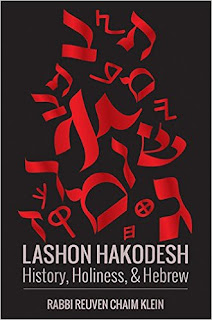Rabbinic Authority: The Vision and the Reality
 Rabbinic Authority: The Vision and the Reality
Rabbinic Authority: The Vision and the RealityRabbi Yehuda Warburg
Urim Publications / 341 pages
In Rabbinic Authority: The Vision and the Reality, Rabbi Yehuda
Warburg, a practicing dayan, among other impressive credentials in both Jewish
and secular law, shares with readers actual cases that transpired in his Beit
Din. There are both Even Ha’ezer and Choshen Mishpat related cases, though the
latter is primary. Topics include, marriage, divorce, spousal abuse,
contractual law, agents, inheritance (a brother being sued by two sisters!), commission,
and more. There is much reference and
comparison to precedents and principles in secular law. The book begins with an
important presentation of the role and authority of the local rabbi (mara
d’atra) and when he need and need not be listened to.
There is a very interesting piece in which the author argues
that one who causes emotional damage and distress (in this case, a victim of
emotional spousal abuse) should be made to pay for those damages. This is approach
is especially noteworthy due to the principle of “gramma” (a halachic principle
that I am particularly interested in) which teaches that indirect damages, or
damages caused without the direct use of physical force, are exempt from
payment in Beit Din. Through a plethora of sources, arguments, precedents, and
proofs, the author presents a novel argument in which he concludes that the
general principles of gramma do not apply, and payment should be made. The
issue is brought up again in the case of a rabbi suing his congregation for,
among other things, emotional damages. In this latter case, however, the rabbi‘s
argument was not strong enough to be awarded any ‘boshet’ payment.
Here’s an excerpt from the unit on the role of the rabbi:
The ability to analyze and
potentially overrule one’s predecessor, whether he be the author of a teshuva or a sefer pesak, involves for the arbiter (including a mara de-atra) yirath shamayim
(religious piety), scholarship, the weighing of contrary precedent opinion and
the exercise of logic. Clearly, many questions posed by one’s followers can be
answered by simply opening up sifrei psak
and responsa. However, to address new questions, being conversant with these
sources of halakha will not suffice.
Borrowing talmudic terminology, Rosh argues that arbiter must engage in
a special type of logic of “me-dameh
milta le-milta”, i.e. applying analogical inferences for the purpose of
discerning the similarities and differences between cases in order to address
new situations.
Implicitly relying upon Talmudic
precedent, R. Abraham, the son of Rambam expounds upon the nature of this type
of logic employed in rendering a decision:
An arbiter who in his decisions follows only what is written and
explicitly stated is weak… Every decision that he is considering, he should
analogize his case to something that is similar to it and derive branches from those roots…They (Talmudic
precedents- RW) were preserved for a reason…in order that the wise man, hearing
them frequently will develop his ability to weigh the matters with discretion
and render decisions properly.
The vitality and effervescence of
the decision-making process is predicated upon an arbiter seeking to resolve a
problem casting about for examples that promise to be fruitful sources for
comparison with the problem at hand. Next, the technique of distinguishing
allows for the emergence of the similarities and differences between the
examples and the problem which requires resolution. Then, the arbiter derives
from these examples a tentative analogy that posits a logical relationship
between the examples and the problem. Finally, the arbiter confirms the rule by
inquiring whether it meets the guidelines for invoking an analogy in this
particular situation. In effect, the method of analogy, unlike ordinary
open-ended reasoning, starts with the prior decisions of one’s predecessors
rather the arbiter’s own reasoning and intuition. Again, the practice of
analogical reasoning reflects the ongoing dialectic between deference to early
authorities and creative innovation. The spur to originality and creativeness,
i.e. koach ha-hiddush, is tempered by
the commitment to thoroughly investigate a wealth of sources and the
collaborative effort of numerous arbiters over time who may have addressed
similar and/or identical problems. The weightiness of precedent opinion will
facilitate the eschewing of flawed and misplaced reason. The engagement in “me-dameh milta le-milta”, in short, is
concomitantly a stimulant and a depressant:
a spur to creativity but equally a motive for restraint.
This book is not easy reading. It is an advanced work for
advanced readers. It will be appreciated by those with a solid background in either
Jewish or secular law. It's great for case study or to gain insights into the application of Talmudic law to today's realities. The book is well footnoted with extensive reference to
both Torah and secular sources. There book also has an exhaustive index that
allows readers to find reference to the entire body of Torah literature where
the issues in the book are dealt with.
http://www.urimpublications.com/Merchant2/merchant.mv?Screen=PROD&Product_Code=BeitDin
http://www.urimpublications.com/Merchant2/merchant.mv?Screen=PROD&Product_Code=BeitDin

